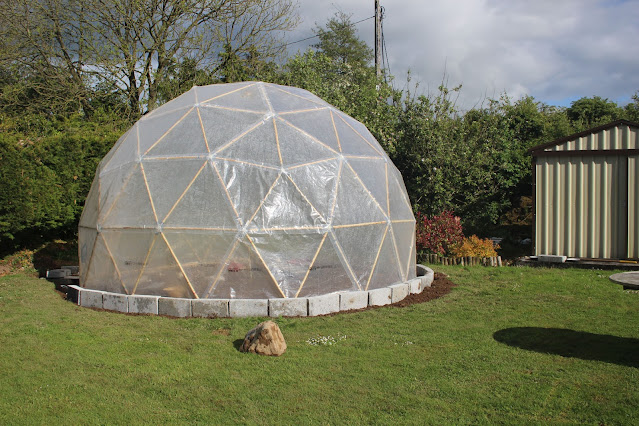Physical construction of bamboo.
This results in the appearance of a solid core if your rod cut lies on a node. These are usually thin enough to be drilled out to reveal the natural diameter of the bamboo.
 |
Various dimensions and shapes
|
OK, due to the construction of bamboo the plugging of the ends of the rods you cut is not so easy. The above shows a typical variation of what each rod end will present to be filled by a dowel trimmed to size. As you can see the sidewalls can be thin (2-3mm). While this is still mechanically very strong...especially under longitudinal forces...you can see that you cant just drill out irregular ends to form easily plugged circles. This means you need to have a lot of dowel diameters to hand and trim them to the irregularities of the bamboo.
My Set up
- Gorilla Tape to wrap round ends of rods to protect against splitting.
- Wood Glue to secure dowel in bamboo rod.
- A variety of dowel diameters
- A sharp craft knife for scoring the inner rods.
- Hand-drill for screw location.
Process Flow
 |
Attach Gorilla Tape to prevent splitting, especially during sawing.
|
Taping prior to sawing with a sharp hacksaw can eliminate feathering / splitting of rods.
 |
A typical irregular rod end.
Select closest larger dowel and trim with sandpaper. Flat zone and slightly ovaloid.
|
 |
Good match of profuile with a little effort.....gets easier with practice.
 | Mark 3.5cm and ensure tight fit.
|
|
 |
Cut 3.5cm plug and drill hole to receive screw (3mm)
 | Use Craft Knife to Score Inside of Rod ~ 20 times evenly spaced
 | Apply wood glue to inner 4cm of rod.
| | With screw embedded apply glue to dowel plug and insert. |
| |
|
|
|
Simply repeat this process twice for every single rod and you'll see the big downside of working with totally natural material in its raw state. However, you do get faster as your eye and flow improves and there is a lot of satisfaction in the strength and appearance of the finished rods.

















Comments
Post a Comment